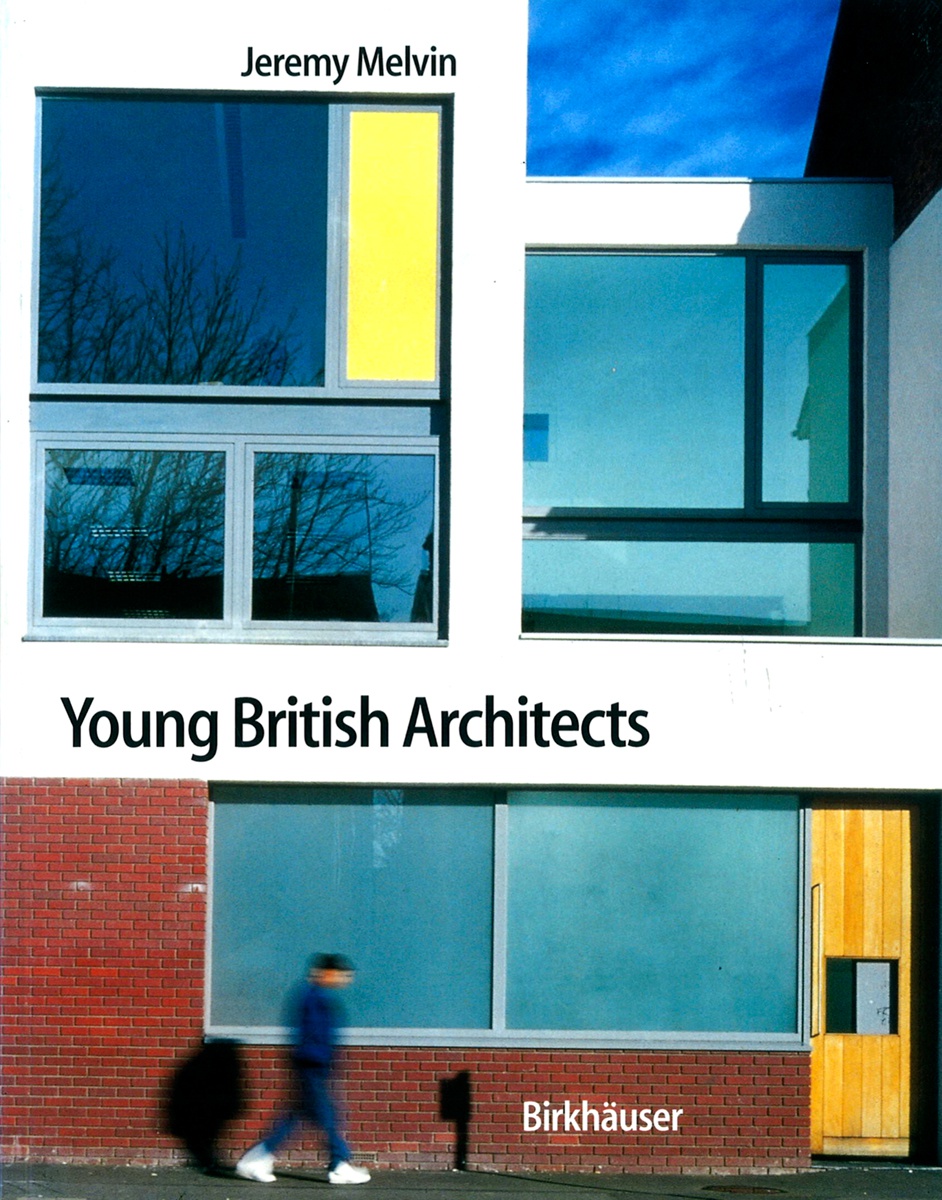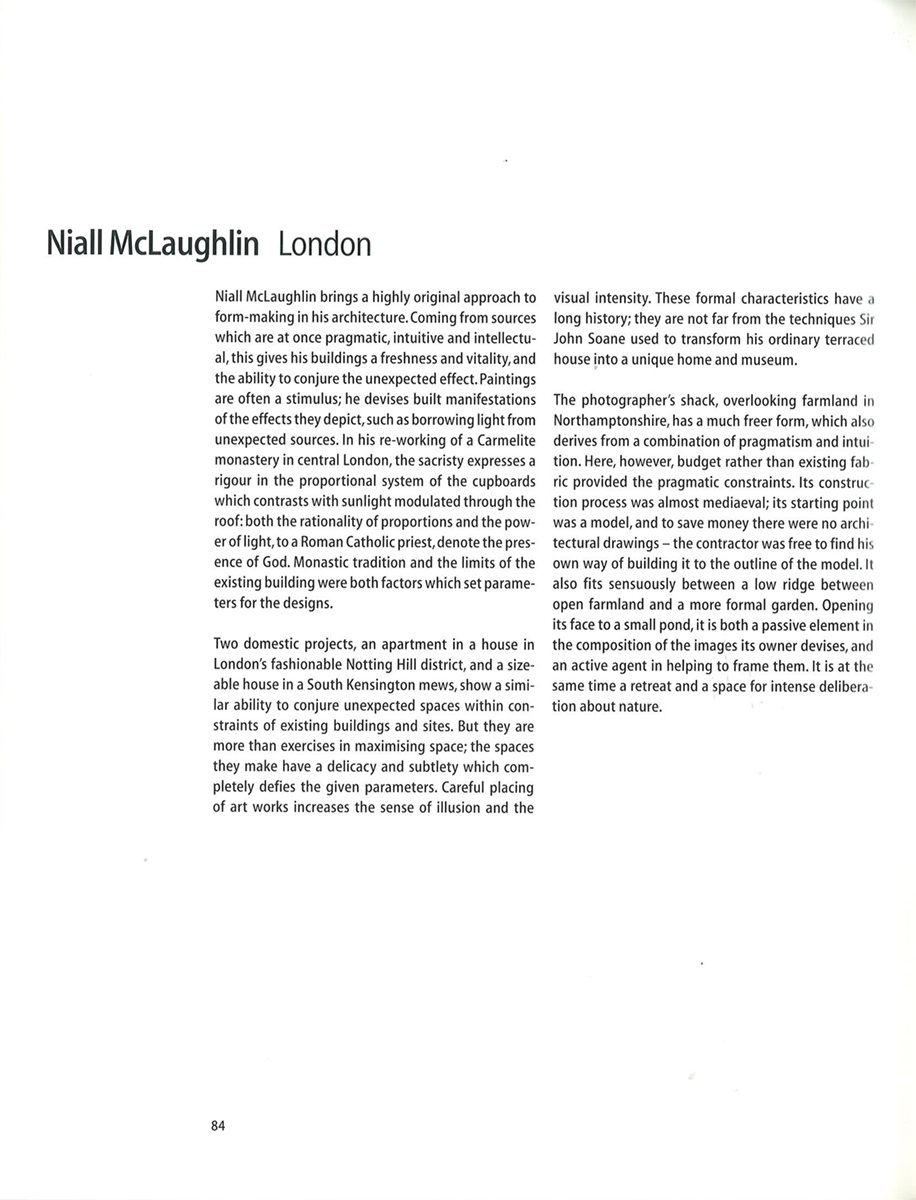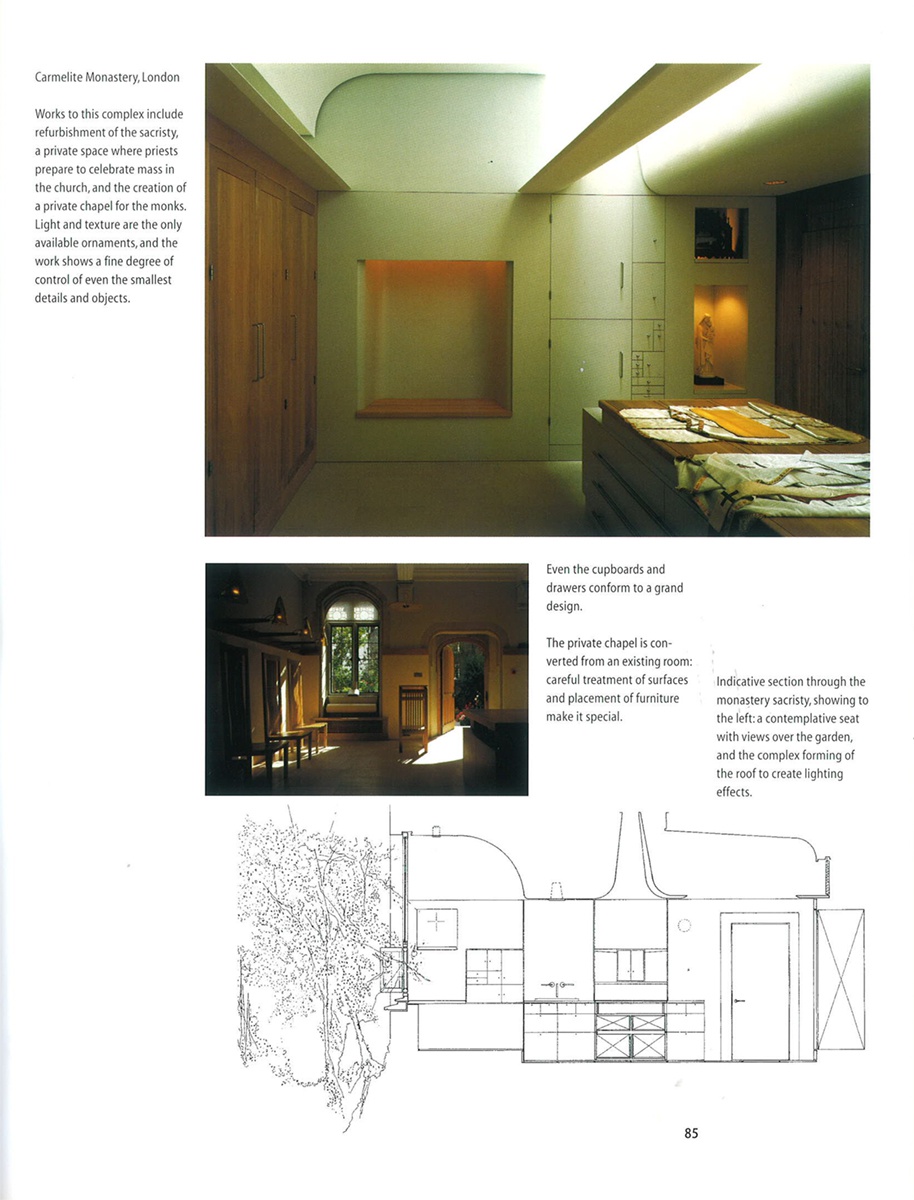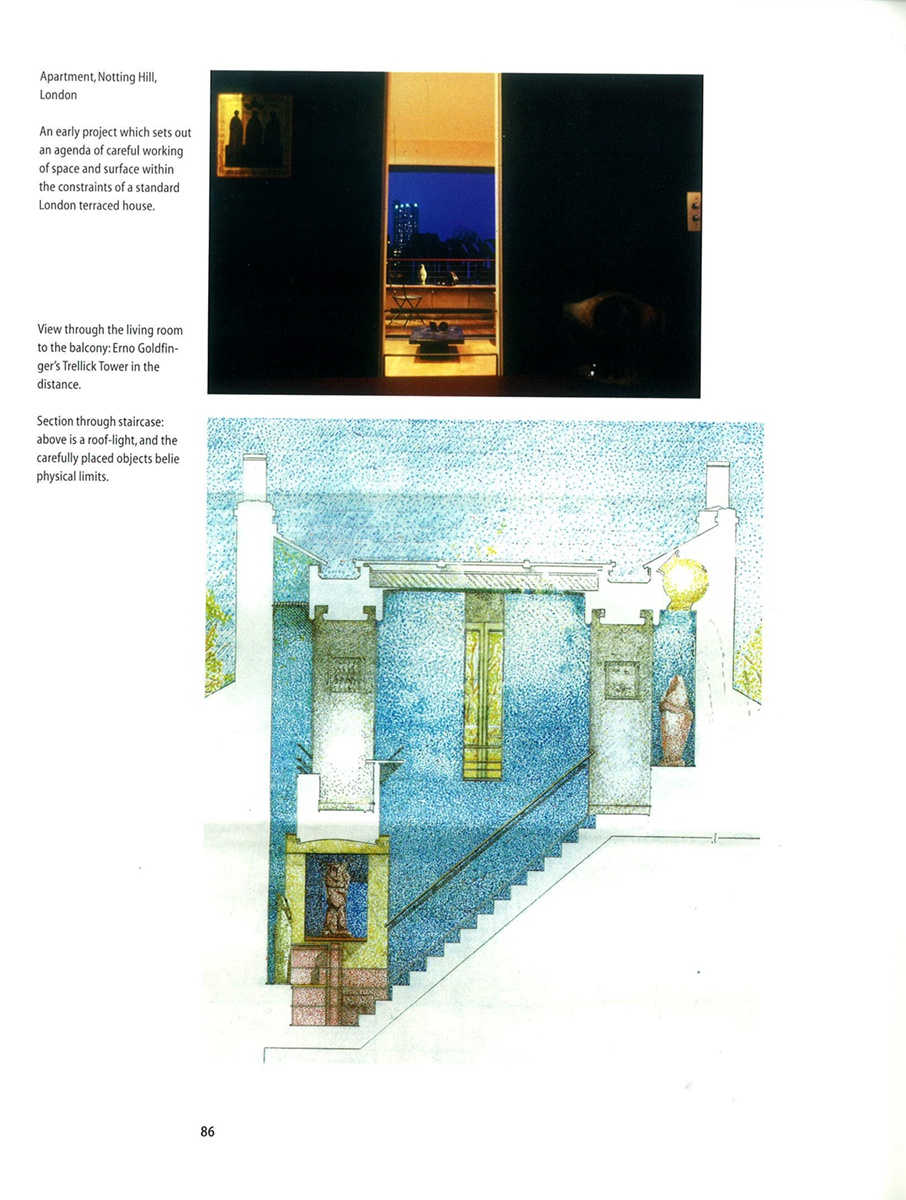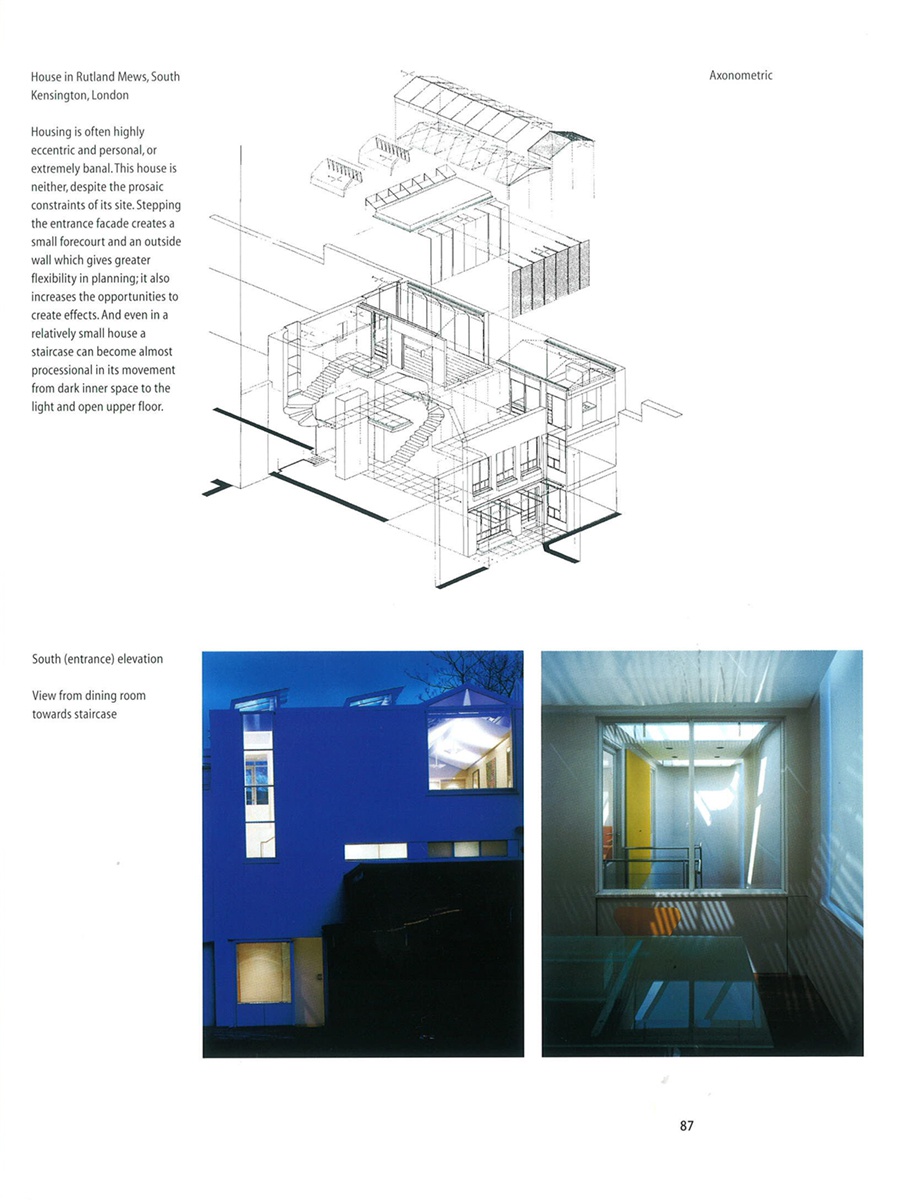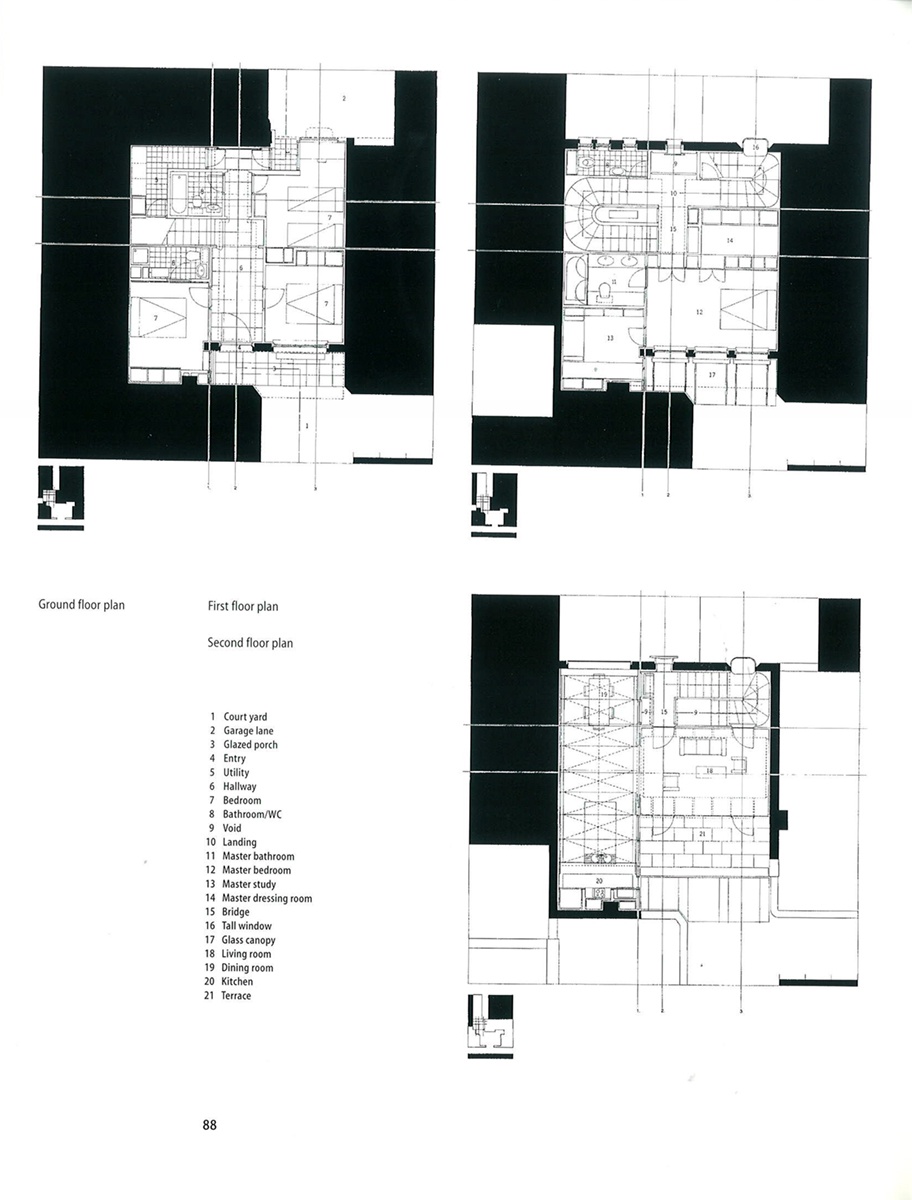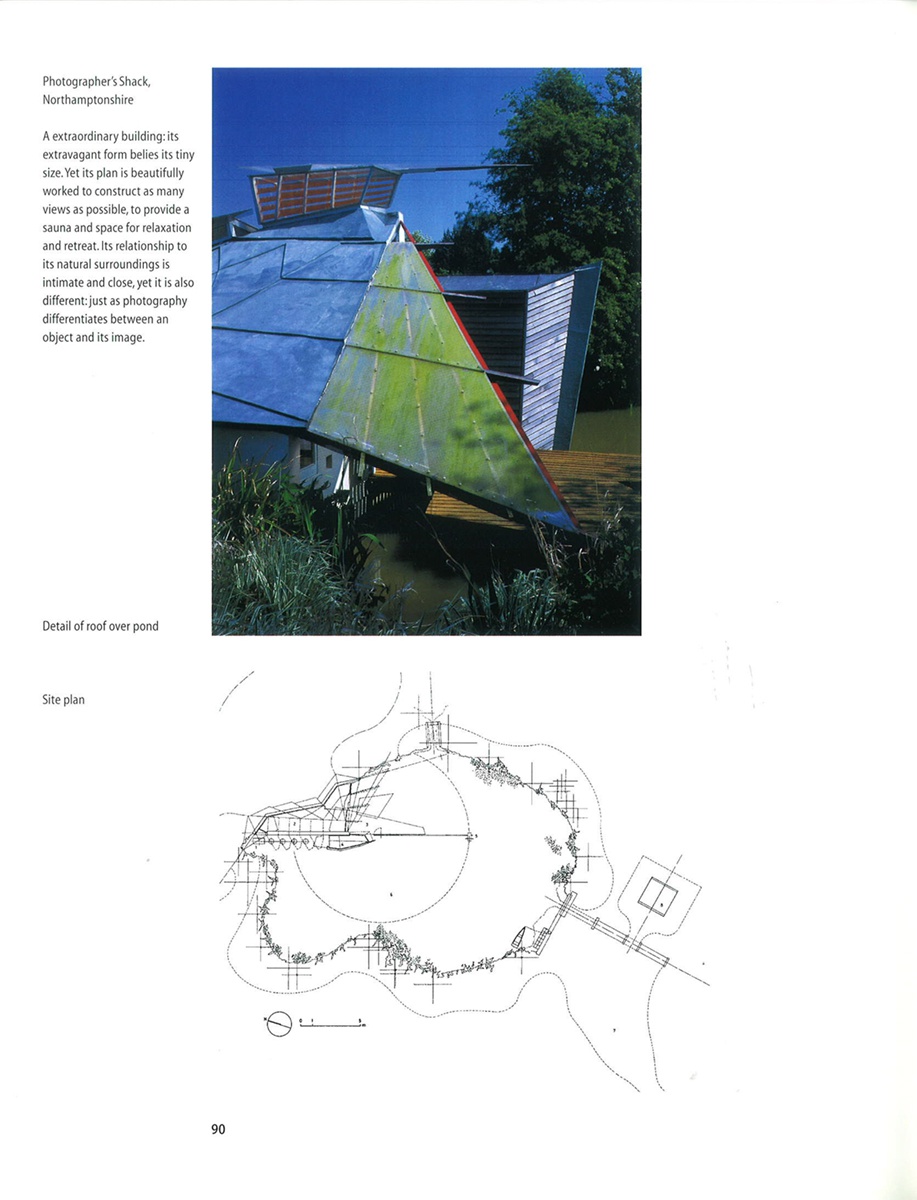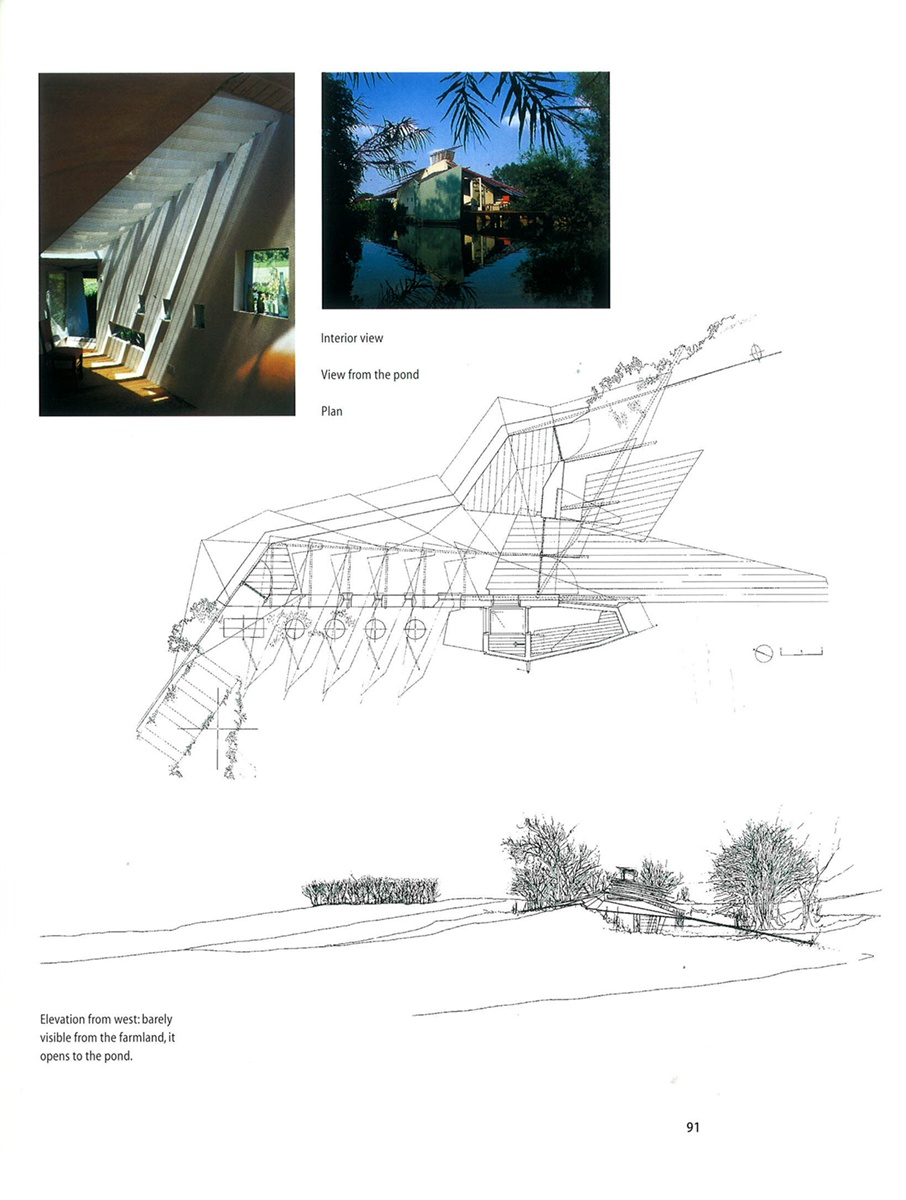Young British Architects
Published by Basel: Birkhauser, 2000
Author Jeremy Melvin
Níall McLaughlin brings a highly original approach to form-making in his architecture. Coming from sources which are at one pragmatic, intuitive and intellectual, this gives his buildings a freshness and vitality, and the ability to conjure the unexpected effect. Paintings are often a stimulus; he devises built manifestations of the effects they depict, such as borrowing light from unexpected sources. In his re-working of a Carmelite monastery in central London, the sacristy expresses a rigour in the proportional system of the cupboards which contrasts with the sunlight modulated through the roof: both the rationality of the proportions and the power of the light, to a Roman Catholic priest, denote the presence of God. Monastic tradition and the limits of the existing building were both factors which set parameters for the designs.
Two domestic projects, an apartment in a house in London’s fashionable Notting Hill district, and a sizeable house in South Kensington news, show a similar ability to conjure unexpected spaces within constraints of existing buildings and sites. But they are more than exercises in maximising space; the spaces they make have a delicacy and subtlety which completely defies the given parameters. Careful placing of art works increases the sense of illusion and the visual intensity. These formal characteristics have a long history; they are not far from the techniques Sir John Soane used to transform his ordinary terraced house into a unique home and museum.
The photographer’s shack, overlooking farmland in Northhamptonshire, has a much freer form, which also derives from a combination of pragmatism and intuition. Here, however, budget rather than the existing fabric provided the pragmatic constraints. its construction process was almost medieval; its starting point was a model, and to save money there were no architectural drawings – the contractor was free to find his own way of building it to the outline of the model. It also fits sensuously between a low ridge between open farmland and a more formal garden. Opening to its face to a small pond, it is both a passive element in the composition of the images its owner devises, and an active agent in helping to frame them. It is at the same time a retreat and a space for intense deliberation about nature.
